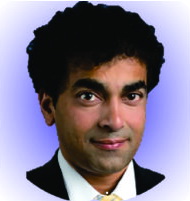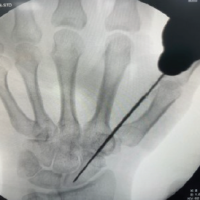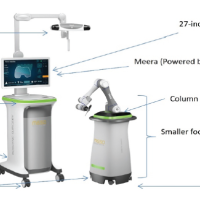A harmonious symphony of the operating room is composed of the surgeon and anesthetist, bound as companions by trust and regard in the intricate dance of surgical precision. The collaboration between them guarantees optimal outcomes and seamless coordination, which are fundamental components of patient care.
Dr. Mantu Jain, 102/J, Cosmopolis, Dumduma, Bhubaneswar, Odisha, India. E-mail: montu_jn@yahoo.com
Since William Morton’s administration of the inaugural anesthetic in 1846, there has been a significant transformation in the field of surgical specialties. The surgical practice underwent rapid evolution with the integration of anesthesiologists as an essential component of the surgical team. The surgeon, who previously held sole command of the ship, has now been joined by a co-pilot to guide the patient through the surgical waters. The fruitful teamwork between the surgeons and anesthesiologists resulted in favorable patient outcomes. The surgeon plays a crucial role in the patient’s care throughout the entire process, starting from the first diagnosis, through the operation, and all the way to the post-operative recovery [1]. The anesthesiologist assumes the role of a perioperative physician, allowing the surgeon to concentrate solely on the surgical procedure. The strategy devised by anesthetists is intricately connected to the rigorous planning undertaken by surgeons. The cornerstone of a cohesive approach to delivering the best possible care to patients is rooted in the principles of shared accountability, mutual comprehension, and collaborative communication. The surgeons and anesthesiologists work in separate positions, divided by a surgical drape, yet collaborate closely as a cohesive “team.” Effective cooperation within the surgical theater is an indispensable requirement. Throughout the surgical operation, surgeons focus on the intricacies of their profession, while anesthetists diligently ensure the patient’s physiological stability. Given the nature of this collaboration, it is essential to maintain regular communication to foster an environment that enables the surgeon to focus on the procedure, while the anesthetist assumes responsibility for assuring the patient’s stability and monitoring their vital signs. The existing state of collaboration among team members is examined in several studies, and there is a lack of research on the impact of anesthesiologist-surgeon collaborations on patient outcomes. The surgical sphere has greatly increased over time, thanks to the safety provided by contemporary anesthesia. However, occasionally circumstances take an unfavorable turn. There is always a chance of complications occurring during any surgical procedure. Amidst the prevalence of medicolegal lawsuits, there exists a subtle distinction between negligence and an adverse incident. Within the high-pressure setting of the operating room, instantaneous judgments might have significant outcomes. The attribution of blame is a regrettable phenomenon that exists in the present day. Surgeons and anesthetists may have divergent viewpoints in situations of complications. Hence, although not all aspects are under the control of doctors, the responsibility and effort always lie with the team as a whole. Irita and Takahashi conducted a survey in Japanese hospitals and reported that while most surgeons were satisfied with their own pre-anesthetic evaluation, the anesthetist’s primary reason for at major operative risk for postponement was communicated only to 17% of the surgical departments [2]. Gawande et al. noted that 43% of adverse events were caused by a breakdown in communication within the team [3]. The figure may appear to be inflated, but it certainly warrants careful consideration. In their study, Lingard et al. examined errors occurring in the operating room and discovered that team cohesion was absent in 30% of these instances [4]. In another study, the authors concluded that interprofessional checklist briefings reduced the number of communication failures and promoted proactive and collaborative team communication [5]. Therefore, despite the existence of standardization and norms in surgery, effective communication among the team members is crucial for the well-being of the patient. It is exceedingly unprofessional for a surgeon to address the anesthesiologist for the 1st time at the moment of incision. Ideally, communication within the team should be proactive. While routine instances may not require extensive deliberation with the same group of individuals, complex cases necessitate a discussion to formulate a comprehensive surgical-anesthetic approach. The reaffirmation of this strategy is necessary in the operating room, encompassing specific aspects of the procedure such as monitoring needs, planned methodology, duration, blood loss, and potential problems. Finally, it is necessary for good communication to go beyond the boundaries of the operating room. What causes communication failures? Cooper et al. identified several factors that contributed to the lack of communication, including a natural hesitancy to interrupt, fear of embarrassment or punishment, worry about being misunderstood, and a lack of understanding about how to effectively express oneself. The challenge is in surmounting the resistance and navigating the obstacles that impede one from expressing oneself. Effective communication entails articulating concerns without getting defensive and exhibiting curiosity to comprehend the viewpoint of the other individual. The authors additionally document several negative opinions that anesthesiologists hold toward surgeons and vice versa [6].
The anesthetist’s perceptions encompass deficiencies in medical and anesthesia-related knowledge, neglecting to recognize substantial blood loss, omitting to inform patients about potentially arduous recoveries, and disregarding patient health conditions and preferences. Furthermore, anesthesiologists may perceive that surgeons frequently underestimate the duration of surgical procedures and discourage other team members from expressing safety concerns. Conversely, surgeons may perceive anesthesiologists as prioritizing speed over patient care, being excessively eager to cancel procedures, disregarding schedules, being unfocused during surgery, and being resistant to adjusting anesthesia methods to accommodate surgical needs. There are also negative opinions regarding factors such as long turnover times, insufficient communication about changes in vital signs or the need for vasopressor support, and a lack of comprehension of the surgeon–patient interaction. Surgeons and anesthesiologists may sometimes exchange information that is incorrect or deceptive [7]. Surgeons and anesthesiologists are no longer perceived as “brains vs. blood” or as “needles vs. knives” [1]. Both categories, consisting of coworkers who lead teams responsible for securely caring for patients, are equally represented. The effectiveness of the surgical “team” and the results for patients rely on mutual respect and cooperation, even when anesthesiologists and surgeons may possess divergent ideals. Professionals in the medical domain must engage in effective communication with both their colleagues and patients across many contexts. Given the crucial role of the anesthesiologist in surgical procedures, it is imperative that future research examines the influence of the interaction between the anesthesiologist and the surgeon on patient morbidity and death rates. The collaborative cooperation between anesthesiologists and surgeons relies on mutual respect and a thorough understanding of each other’s responsibilities. Over time, medical professionals develop familiarity with one other’s working methods and areas of expertise. The relationship between a surgeon and an anesthesiologist is unique even if their interactions are often brief. Most surgeons, especially those in big practices, consistently consult with the same anesthesiologist and the familiarity helps in trust [6]. Hence, it may be imperative to spend several years honing one’s skills in the same environment to successfully develop this connection. Surgeons and anesthetists should enhance their interaction beyond the confines of the operating theater to foster professional collaboration and personal well-being [8]. This can facilitate the development of mutual trust and comprehension. Participating in social activities or meetings arranged by the hospital or medical community provides an opportunity to engage in a more informal environment. Engaging in inter-departmental seminars and cooperating on research projects will augment one’s understanding of different disciplines and solidify professional relationships. Organizing informal gatherings, such as coffee or lunch meetings, outside of regular business hours, to commemorate professional accomplishments, birthdays, or other personal milestones, can foster deeper personal connections among colleagues. Finally, it is necessary to recognize and value the contributions of both individuals to patient care. Expressing appreciation with a straightforward thank-you message or gesture of gratitude can significantly contribute to establishing a strong and positive relationship. Demonstrate mutual respect for one another’s work-life balance and foster an environment that promotes support, reduces burnout, and allows both individuals to prioritize their well-being beyond work.
References
- 1.Bryan YF, Kolarzyck L. From ship captains to crew members in a history of relationships between anesthesiologists and surgeons. AMA J Ethics 2020;22:E333-9. [Google Scholar]
- 2.Irita K, Takahashi S. Lack of communication between anesthesiologists and surgeons: Comparison of questionnaire survey among anesthesiologists with that among surgeons concerning pre-anesthetic evaluation of surgical patients. Masui 2000;49:7-17. [Google Scholar]
- 3.Gawande AA, Zinner MJ, Studdert DM, Brennan TA. Analysis of errors reported by surgeons at three teaching hospitals. Surgery 2003;133:614-21. [Google Scholar]
- 4.Lingard L, Espin S, Whyte S, Regehr G, Baker GR, Reznick R, et al. Communication failures in the operating room: An observational classification of recurrent types and effects. Qual Saf Health Care 2004;13:330-4. [Google Scholar]
- 5.Lingard L, Regehr G, Orser B, Reznick R, Baker GR, Doran D, et al. Evaluation of a preoperative checklist and team briefing among surgeons, nurses, and anesthesiologists to reduce failures in communication. Arch Surg 2008;143:12-7, discussion 18. [Google Scholar]
- 6.Cooper JB. Critical role of the surgeon-anesthesiologist relationship for patient safety. Anesthesiology 2018;129:402-5. [Google Scholar]
- 7.Nurok M, Lee YY, Ma Y, Kirwan A, Wynia M, Segal S. Are surgeons and anesthesiologists lying to each other or gaming the system? A national random sample survey about “truth-telling practices” in the perioperative setting in the United States. Patient Saf Surg 2015;9:34. [Google Scholar]
- 8.Loeb AE, Jia SY, Humbyrd CJ. What should an anesthesiologist and surgeon do when they disagree about terms of perioperative DNR suspension? AMA J Ethics 2020;22:283-90. [Google Scholar]









